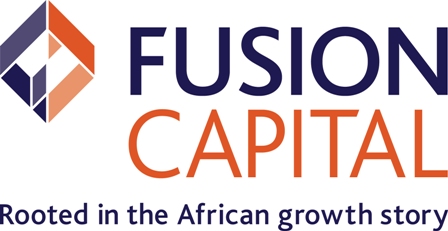Consolidation Will Not Fix Our Banking Sector
It is no secret that the government would like Kenya to have just a few big banks. The Finance Cabinet Secretary at the last budget reading proposed a 400% increase in banks’ core capital from Sh1 billion to Sh5 billion, aimed at forcing consolidation and acquisition of the smaller banks. While he first disagreed with this, CBK governor’s initial enthusiasm for niche banks seems to be waning, in light of the collapse of 3 key commercial banks, most recently Chase Bank. In fact, the impending acquisition of Chase by KCB, Kenya’s biggest bank by asset size, beats the consolidation drums even louder.
While the treasury CS has come out clearly with the claim that Kenya is overbanked and consolidation is the next step, evidence suggests that this is not the case, and if consolidation is to happen moving forward, it will not be considered “market-led”. In terms of getting financial services to the unbanked, Kenya has made great strides but still has some way to go.
Have we reached banking nirvana?
The suggestion that we have more than enough banks is an interesting one. According to the Central Bank website, there are currently 43 licensed commercial banks (including the 3 in receivership/statutory management). That is about 1 bank for every 1 million Kenyans. South Africa, with a population of 52 million, has 19 banks, while Nigeria, with a population of 180 million, has just 22 banks. If the definition of being over-banked is the ratio of banks to population, then one can say we are over-banked.
However, the true test of over-supply is what’s happening in the market. Have our banks achieved product homogeneity? Are they serving everyone they could profitably serve, and have their profits leveled off because there isn’t any more money to be made in banking? Are Kenyans spoilt for choice, are banks dying to serve them?
The answer for each of the above questions is a resounding “no”.
Financial inclusion or inclusive financing is defined as the delivery of financial services at affordable costs to sections of disadvantaged and low income segments of society. By this definition, Kenya has not yet achieved financial inclusion.
The proliferation of mobile money services (M Pesa/M Shwari), and “bottom of the pyramid” banks like Family, Equity banks and MFIs have done a fantastic job in getting the unbanked banked, but banking is still very expensive and out of reach for many Kenyans. In a country where a significant part of the population lives on less than $1.5, we cannot say that a $.3 ATM withdrawal charge is cheap or affordable. Similarly, mobile money transfer services are not cheap, and save for the really wealthy, there’s no flexibility on bank charges.
Given these fees, it’s unsurprising to learn that 94% of Chase Banks deposits were held in only 3% of the accounts. The statistics on loans and mortgages are even worse, only the very wealthy can afford to take out a mortgage, given the interest rates. And still, financial institutions are recording double digit profit growth, suggesting that there is still room for innovation, there’s space for even more banking.
Correctly identifying the problem is the first step to fixing it
The current banking crisis has been inaccurately compared with the Nigeria crisis of the 90s-2000s. During this period one out of every three banks in Nigeria was marginally unsound or totally unsound. The fundamental problems of Nigerian banks, particularly those classified as unsound included persistent illiquidity, poor assets quality and unprofitable operations. In the same vein, the major problems facing the entire banking sector were: over-dependence on public sector deposits and neglect of small and medium class savers; weak capital base; insolvency as evidenced by negative capital adequacy ratios and shareholders’ funds that had been completely eroded by operating losses; gross insider abuses, resulting in huge non-performing insider related credits; weak corporate governance and risk management practices.
These problems are fundamentally different from the problems facing Kenya’s banking sector. Industry leaders including the CBK Governor have reiterated that the sector is robust, and as demonstrated above, there is still room for innovation. Banks are still very attractive to private equity and investors; in fact, both Chase Bank and Imperial Bank had successfully raised bond funding less than a year before their collapse. The week before its collapse, Chase Bank had received Kshs 5 billion from AfDB. Most small banks are easily able to raise private equity funding.
The problem as enumerated so clearly by the Governor is governance, hubris, and outright fraud. After a long period of super normal profits, the economy has turned. Bankers, unable to deal with the reality that they need to innovate more to keep making money, became creative with their books. Correcting this is what has led to massive reduction of profits. Secondly, the banks that have collapsed in the last year have had glaring governance issues, a theme that seems consistent across most locally owned banks, regardless of size. Loose lending policies, abuse of executive power, outright dishonesty and fraud are rife, it is on this that the CBK needs to come down on, hard.
Finally, we need to look hard in the mirror
When we have blatant theft in the most regulated sector in the country, it raises broader questions about our character as a nation. My ever wise colleague recently commented that corruption and theft seems to have reached a tipping point in Kenya, and I agree. Everyone is stealing, and from the look of things, private sector corruption matches, if not exceeds public sector corruption.
This is who Kenya has become, the question is, what are we going to do about it? Kenya is not over-banked, it is the corruption that’s ailing us and consolidation will not fix that.
Noticed that this piece is written so much better than my other articles? This is because of Nanjala (https://twitter.com/Nanjala1 ) . She helped me perfect it, she’s awesome.



1 Comment